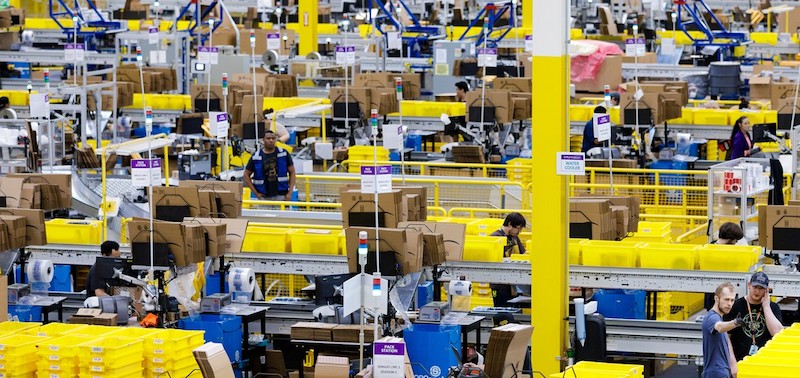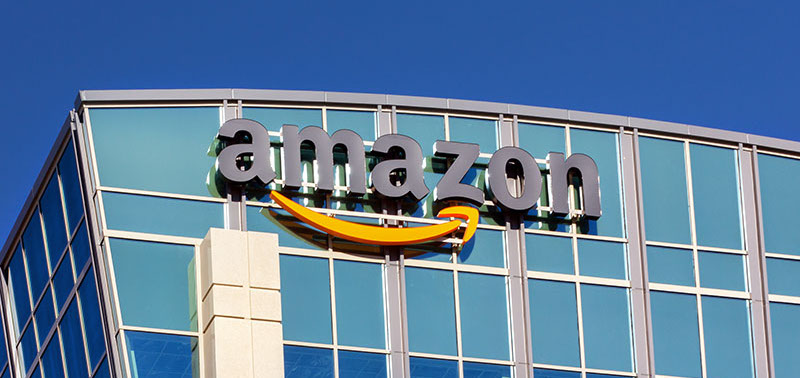Amazon Business is fast becoming the 800-pound gorilla in B2B distribution, but it wasn’t always this way. With Amazon’s stunning growth over the last few years, it’s easy to assume that everything the ecommerce giant tries works. But that isn’t the case – Amazon had to learn the hard way in B2B.
Amazon’s original foray into B2B started back in 2005 with its acquisition of SmallParts.com, an online hardware store. In 2012, this small acquisition merged into AmazonSupply, Amazon’s first branded B2B website. Unusually, Amazon took the step of hosting AmazonSupply at amazonsupply.com, a separate URL from its main website. And unlike Amazon’s consumer business, AmazonSupply acted strictly as a reseller, meaning that the marketplace element of Amazon’s B2C business was notably absent. The new B2B store launched with 500,000 products and Amazon’s usual free two-day shipping on orders over $50.
AmazonSupply was a great learning experience for Amazon. It enabled the company to start connecting with B2B buyers and understanding how their needs differed from its B2C model. It also helped them build out their foundational product catalog in B2B, which included many products and product categories that the company hadn’t sold before.
However, AmazonSupply also had some problems. Traffic was lower than expected and sales were not great. The lack of the wider marketplace also limited AmazonSupply’s product selection, which was an essential piece of the Amazon value proposition.
The Everything Store for B2B
As AmazonSupply was struggling, Amazon quietly launched Amazon Business. Eventually, AmazonSupply was shuttered and folded into Amazon Business in 2015. Unlike AmazonSupply, Amazon Business relied heavily on third-party sellers who were part of the Amazon Marketplace.
In Amazon’s marketplace model, third-party sellers compete directly with Amazon in addition to selling items that Amazon doesn’t. This model brings unparalleled catalog breadth, as it allows Amazon to focus on selling a handful of high-volume items while leaving the rest up to everyone else. The long tail drives less revenue for Amazon but greater margins. According to analyst estimates, on third-party sellers account for more than 80 percent of the listings on Amazon’s B2C site, and third-parties now account for more than 50 percent of its total sales. And to top it off, profit margins from the Amazon Marketplace are double those from Amazon’s linear reselling business.
In B2B, this marketplace approach has the added benefit of allowing Amazon to take advantage of small distributors’ delivery capabilities for more specialized products like chemicals, metals and more. On the flip side, Amazon’s Fulfilled by Amazon program lowers the barrier to entry for sellers of pack and ship items, as they can tap into Amazon’s well-established distribution infrastructure rather than building out their own.
Combined, these value propositions have made third-party sellers essential to Amazon’s success in B2B. So far, Amazon Business’s strategy has been to avoid going head to head with major distributors like Grainger. Instead, Amazon has targeted tail spend, as laid out in-depth in a recent MDM white paper. This strategy has been successful because Amazon Business has product breadth that traditional distribution models can’t match. When a customer’s go-to distributor doesn’t have a particular product, Amazon Business is always there to pick up the slack.
Going after this low hanging fruit has carried Amazon Business to unprecedented growth in B2B. Amazon Business could very well be at $10 billion a year in sales – or more. While the company hasn’t published official numbers since 2016, this figure matches its growth trajectory.
For big distributors, the concern is what comes next for Amazon. Once it’s gotten a foothold into B2B with tail spend, where will Amazon attack next? And how much of your business is at risk? We delve deeper into these topics in our article in the latest edition of MDM. Check out this analysis here.
Alex Moazed (ajm@applicoinc.com) is the CEO and Founder of Applico, a platform innovation company that provides advisory services to help enterprises launch and scale platform businesses. He is a co-author of the Amazon bestseller, Modern Monopolies.
Related Posts
-
Amazon's new 820,000 square-foot site in the city of Pflugerville will create 1,000 new, full-time…
-
New 625,000 square-foot site in the city of El Paso — the second facility coming…
-
Amazon.com, Inc. (NASDAQ:AMZ) reported sales net sales increased 20% to $280.5 billion, an increase of 22% compared…





